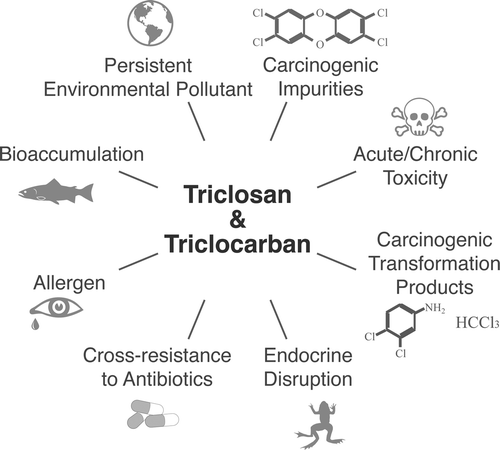WASHINGTON—The widespread use of antimicrobials in common household products is causing severe harm to human health and the environment, while at the same time having no demonstrable benefit to consumers, according to a research article published in the journal Environmental Science & Technology.
The article focuses on two persistent antimicrobial agents, triclocarban (TCC) and triclosan (TCS), present in over 2000 antimicrobial products from soaps and toothpaste to carpets and pacifiers, representing a $1.4 billion industry in the U.S.
“Although TCS and TCC are effective in killing microorganisms when applied judiciously by professionals in health care settings,” writes Rolph Halden, author of the article and professor at Arizona State University, “their proliferating use by the general population, which accounts for the vast majority of the chemicals’ production volume, lacks convincing data on health benefits, according to epidemiological studies.”
First introduced to commerce in 1957 and 1964, respectively, TCC and TCS in household products have had significant negative effects on the environment and poses a threat for human health.

Following decades of permissive regulation, it appears that the Food and Drug Administration (FDA) may be prepared to place tighter rules on the use and distribution of many antimicrobials. Open for public comments until June 16, FDA is requiring soap manufacturers to demonstrate, within one year, that substances in their products are safe or remove them from their formulations altogether.
“Consumers reaching for a random soap on U.S. supermarket shelves, likely bring home a product containing either TCS or TCC,” writes Halden. “Despite labeling requirements, consumer awareness of harmful active ingredients in household products remains low.”
Halden argues against the current widespread use of antimicrobials in the household setting because they are not used as originally intended. For example, for an antimicrobial soap to be effective, it must be used on hands for 20 to 30 seconds. However, in the home most people use soap for less than six seconds, rendering it ineffective in killing bacteria, but remaining in the environment and affecting wildlife for decades.
The environmental consequences of using TCC and TCS-containing household products are significant. To understand this phenomenon, Halden begins by explaining how these chemicals make it into the environment in the first place.
Generally flushed down the drain, TCC and TCS are generally conveyed to a municipal wastewater treatment plant, where 97 to 98 percent of TCC and TCS is removed from raw sewage.
“However, removal from sewage does not necessarily equal degradation,” explains Halden. Instead, they can accumulate and concentrate as a byproduct of sewage sludge digestion. Sludge is then incinerated (which can release carcinogenic TCS dioxins) or placed in landfills or on land.
When disposed of on landfills, TCC , TCS and their products may leach into surface waters and soil.
“Contrary to the situation described for hand washing (exposure times of a few seconds), these environmental toxic exposures are not temporal, but rather extend over the entire lifespan of aquatic and terrestrial organisms and across multiple generations,” writes Halder. “TCS and TCC are 100–1000 times more effective in inhibiting and killing algae, crustaceans and fish than they are in killing microbes.”
The presence of TCC and TCS has been detected in algae, aquatic blackworms, fish, dolphins, earth worms, several plants, and even songbirds.
When they leach into the soil, these chemicals can make their way up the natural food chain, as well as into crops and animal feed. Barley, meadow fescue, carrots, and pinto beans have all been shown to take up antimicrobials from soil.
TCC and TCS have become ubiquitous, detected in ocean water, dust, and even spacecraft.
“U.S. streams have a 60–100% likelihood of containing detectable quantities of TCS and TCC,” writes Halden. “TCS has been detected in drinking water resources, 75% of urine samples representative of the U.S. population, 97% of representative U.S. breast milk samples, and combined TCS and TCC constitute over 60% of the total mass of 96 pharmaceuticals detectable in municipal sludge.”
More concerning is that given their ubiquity, there is little hard data about the effects of elective and environmental exposure to TCC and TCS in humans. However, studies are increasing.
“Acute and chronic health effects of TCS and TCC observed in humans and animals following exposure include irritation of eyes and skin, sensitization to aeroallergens and food, immunologic reactions such as allergies, developmental and reproductive toxicity, inhibition of muscle function, as well as in vivo genotoxicity,” writes Halden.
There is also indication that both chemicals are potential endocrine disruptors and can be important in the development of antibiotic drug resistance.
Halden advocates for a restriction of TCC and TCS to healthcare settings and prescription products. He also advocates the development and use of next-generation antimicrobials with “high efficacy toward pathogens but low toxicity to nontarget, multicellular organisms.”
